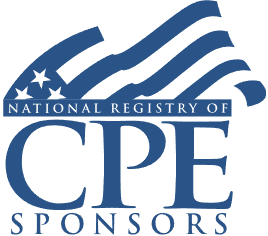State and Local Tax Automation: Tools and Techniques to Facilitate Compliance

Welcome! Strafford is now BARBRI! The expert courses you know from the trusted global leader in legal education.
Course Details
- smart_display Format
On-Demand
- signal_cellular_alt Difficulty Level
Intermediate
- work Practice Area
Corporate Tax
- event Date
Tuesday, March 19, 2024
- schedule Time
1:00 p.m. ET./10:00 a.m. PT
- timer Program Length
110 minutes
-
BARBRI is a NASBA CPE sponsor and this 110-minute webinar is accredited for 2.0 CPE credits.
This webinar will discuss the benefits and caveats of automating state and local tax compliance. Our panel of notable SALT veterans will identify the most beneficial uses of technology, review available systems, and provide recommendations to maximize an investment in automation for businesses struggling with multistate SALT compliance.
Faculty

Ms. Le is a CPA and licensed attorney specializing in tax strategies for growing businesses. She works closely with clients on a variety of state and local tax (SALT) issues and assists businesses in responding to notices issued by taxing jurisdictions. Ms. Le has represented taxpayers before the IRS and the U.S. tax court and assisted clients with complex tax issues including offers-in-compromise and audit reconsiderations.

Ms. Vorndran helps clients and tax professionals navigate the morass of state and local tax issues with the goal of making it less “taxing!” She is a nationally recognized thought leader and award-winning instructor with a steady focus on finding ways to simplify complex state and local tax issues and resolve areas of state tax controversy.
Description
The plethora of state taxes, including sales tax, income tax, payroll, property, local taxes, and VAT, along with differing rules for every jurisdiction, make automating SALT compliance an imperative for multistate businesses. Utilizing technology can streamline state and local tax processes, ease compliance burdens, and save tax dollars. Often, the cost of technology is recouped in time.
A comprehensive review of state and local tax processes and investment in automated solutions is a must. Performing the review and selecting a technology solution can be overwhelming. However, a well-maintained system can analyze data for cost savings and provide concrete resources for audit defense. SALT practitioners and multistate companies need to understand the technological resources available to assist with the time, cost, and concerns surrounding SALT compliance.
Listen as our panel of state and local tax experts explains best practices for implementing and reviewing SALT technology.
Outline
- State and local tax automation: introduction
- Utilizing SALT technology
- State income taxes
- State and local taxes
- Payroll tax
- Property tax
- Other taxes
- Selecting a system
- Technology and SALT audits
- Best practices
Benefits
The panel will cover these and other critical issues:
- How automation can help alleviate the compliance burden for state income tax compliance
- Systems available to aid with state and local taxes
- Specific benefits of automating sales tax reporting and remittance
- How technology can be used to defend state and local tax positions when audited
NASBA Details
Learning Objectives:
After completing this course, you will be able to:
- Identify differences in currently available SALT systems
- Determine how technology can be used to support SALT positions when audited
- Decide how automating SALT compliance can save employees' time
- Ascertain the benefits of utilizing technology to assist with SALT compliance
- Field of Study: Taxes
- Level of Knowledge: Intermediate
- Advance Preparation: None
- Teaching Method: Seminar/Lecture
- Delivery Method: Group-Internet (via computer)
- Attendance Monitoring Method: Attendance is monitored electronically via a participant's PIN and through a series of attendance verification prompts displayed throughout the program
- Prerequisite: Three years+ business or public firm experience preparing complex tax forms and schedules, supervising other preparers or accountants. Specific knowledge and understanding of SALT taxation, nexus and apportionment as it applies to multi-state businesses.

Strafford Publications, Inc. is registered with the National Association of State Boards of Accountancy (NASBA) as a sponsor of continuing professional education on the National Registry of CPE Sponsors. State boards of Accountancy have final authority on the acceptance of individual courses for CPE Credits. Complaints regarding registered sponsons may be submitted to NASBA through its website: www.nasbaregistry.org.
Unlimited access to premium CLE courses:
- Annual access
- Available live and on-demand
- Best for attorneys and legal professionals
Unlimited access to premium CPE courses.:
- Annual access
- Available live and on-demand
- Best for CPAs and tax professionals
Unlimited access to premium CLE, CPE, Professional Skills and Practice-Ready courses.:
- Annual access
- Available live and on-demand
- Best for legal, accounting, and tax professionals
Unlimited access to Professional Skills and Practice-Ready courses:
- Annual access
- Available on-demand
- Best for new attorneys
Related Courses

Sales and Use Tax Issues for Construction Contractors
Thursday, October 23, 2025
1:00 p.m. ET./10:00 a.m. PT

Impact of OBBBA on SALT: Handling Multistate Tax Issues
Wednesday, November 5, 2025
1:00 p.m. ET./10:00 a.m. PT